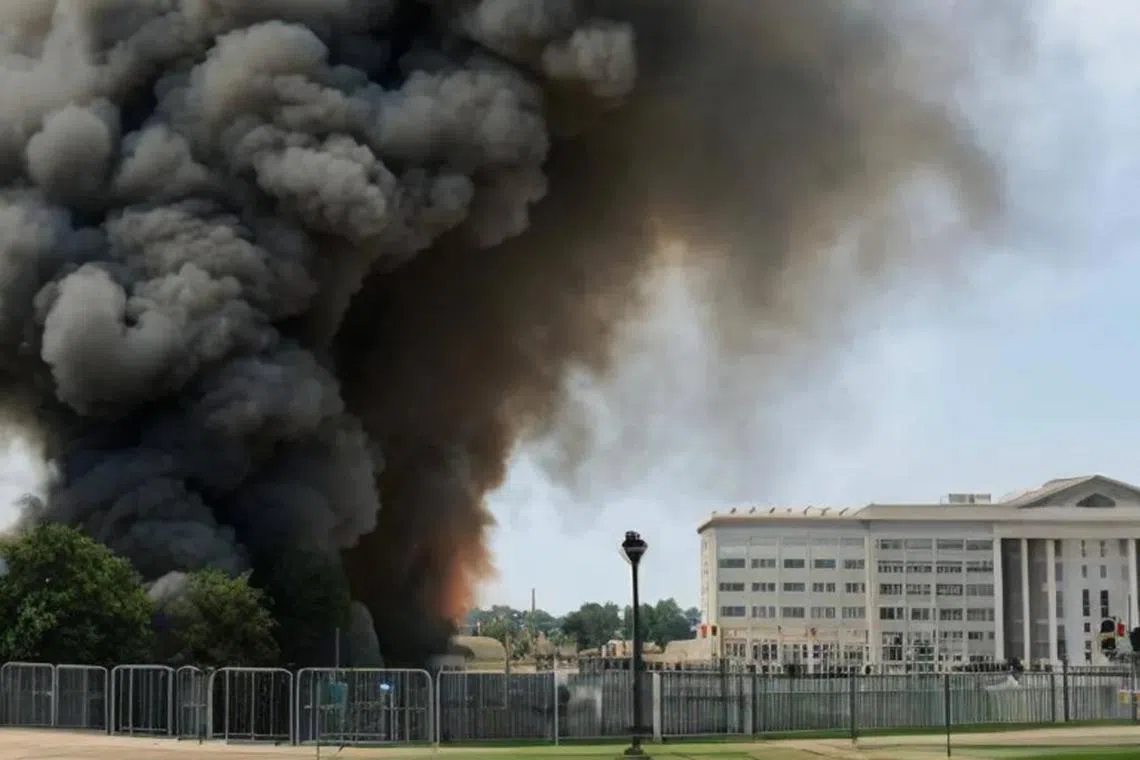How a fake AI photo of a Pentagon blast went viral and briefly spooked stocks
Sign up now: Get ST's newsletters delivered to your inbox

The fake photo showed a large plume of smoke that a Facebook user claimed was near the US military headquarters in Virginia.
PHOTO: IAPONOMARENKO/TWITTER
Follow topic:
WASHINGTON – A falsified photograph of an explosion near the Pentagon spread widely on social media on Monday morning, briefly sending US stocks lower in possibly the first instance of an artificial intelligence-generated image moving the market.
Just past 10am New York time, when the photo was circulating, the S&P 500 declined by about 0.3 per cent to a session low. As news emerged that it was a hoax, the index quickly rebounded.
The fake photo, which first appeared on Facebook, showed a large plume of smoke that a Facebook user claimed was near the US military headquarters in Virginia.
It soon spread on Twitter accounts that reach millions of followers, including the Russian state-controlled news network RT and the financial news site ZeroHedge, a participant in the social media company’s new Twitter Blue verification system.
A duty officer from the Pentagon said in an e-mail to Bloomberg that there were no incidents reported on Monday morning.
The Arlington Police Department also tweeted: “There is NO explosion or incident taking place at or near the Pentagon reservation, and there is no immediate danger or hazards to the public.”
Ahead of official sources refuting the photo and the Twitter accounts that spread it, people noted that the image may have been generated by artificial intelligence (AI).
Mr Nick Waters, a researcher at the open source intelligence group Bellingcat, said in an interview that the “shock” of hearing about a rumoured explosion near the Pentagon led him to examine the photo.
“Check out the frontage of the building, and the way the fence melds into the crowd barriers,” he said on Twitter. “There’s also no other images, videos or people posting as first hand witnesses.”
As the facts emerged, Twitter accounts responsible for spreading the photo began to delete their tweets or post corrections. RT and ZeroHedge deleted tweets with the image, and ZeroHedge said the photo had been confirmed as fake.
A paid account on Twitter called Bloomberg Feed that also posted the photo was suspended on Monday morning.
A Bloomberg News spokesman said that Bloomberg Feed and a Twitter account called Walter Bloomberg, which also carried the report, are not affiliated with Bloomberg News.
While the origin of the image remains unclear, speculation that it was generated by AI deepened concerns that emerging technologies that make it easy to create images and other content will accelerate the spread of misinformation.
On Facebook, the account that first published the fake photo – alongside other published posts related to the conspiracy group QAnon – had a “false information” label appended to their original post.
Facebook blocked access to the post and said that the image had been “checked by independent fact-checkers”.
Twitter and Meta Platforms, which owns Facebook, did not respond to a request for comment. RT did not immediately respond. BLOOMBERG

